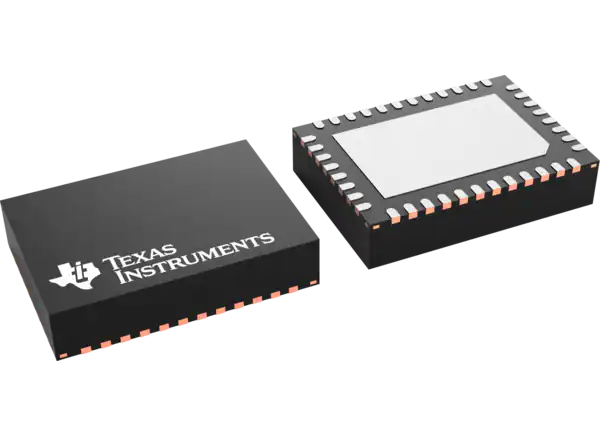Introduction, characteristics, and applications of Texas Instruments TPS546B24S synchronous SWIFT buck converter
2/16/2024 9:45:00 AM
Summary: Highly integrated, up to 4x stackable, non-isolated converter with PMBus and extended security.

The Texas Instruments TPS546B24S synchronous SWIFT buck converter is a highly integrated, up to 4x stackable, non-isolated DC/DC converter with PMBus and extended write protection. The buck converter offers an input voltage range of 2.95V to 18V, 12 selectable switching frequencies from 225kHz to 1.5MHz, and 20A output current. The TPS546B24S converter can provide up to 80A on a single output if interconnected with two, three and four other TPS546B24S converters. This buck converter features an integrated 5.5 milliohm/1.8 milliohm MOSFET and selectable 0.5V to 5.5V output via pin-strip or 0.25V to 5.5V using PMBus VOUT_COMMAND. The TPS546B24S converter uses proprietary fixed-frequency current mode control with input feedforward and selectable internal compensation components for minimal size and stability. Typical applications include data center switches, rack servers, active antenna systems, long-range radios, baseband units and automated test equipment, CT, PET and MRI.
The TPS546B24S converter extends the TPS546B24A buck converter by adding manufacturer-specific PMBus commands and extended write protection and Passkey. This feature enhances security by limiting write capabilities, preventing malicious access to the PMBus, and has better resolution than standard write-protect commands. The PMBus interface supporting 1MHz clock provides a standardized digital interface for converter configuration and monitoring of key parameters including output voltage, current and internal chip temperature. Depending on system requirements, the response to a fault condition can be set to restart, shut down, or ignore. Back-channel communication between stacked devices enables all TPS546B24S converters to power a single output rail and thus share a single address, simplifying system software/firmware design.
characteristic
-
2.95V to 18V PVIN; 2.95V to 18V AV(IN) (4V(IN) VDD5 for switching) split rail support
-
Integrated 5.5 milliohm/1.8 milliohm mosfet
-
Average current mode control with selectable internal compensation
-
2 × 3 × 4 × stackable, current sharing up to 80A, supports one address per output
-
Selectable 0.5V to 5.5V output via pin-strip or 0.25V to 5.5V using PMBus VOUT_COMMAND
-
Extensive PMBus command set telemetry V(OUT), I(OUT), and internal mold temperature
-
Differential Sensing with an Internal FB Divider Less than 1% VOUT Error, -40°C to 150°CT(J)
-
AVS and marginal capabilities via PMBus
-
MSEL pin programming PMBus default value
-
12 selectable switching frequencies from 225kHz to 1.5MHz (8-pin with option)
-
Frequency synchronization input, synchronization output
-
Support pre-biased output
-
7mm × 5mm × 1.5mm, 40-pin QFN
-
Plug-in compatible TPS546B24A
app
-
Data center switches, rack servers
-
Active antenna systems, long-range radios and baseband units
-
Automatic test equipment, CT, PET and MRI
-
ASIC, SoC, FPGA, DSP core, I/O voltage
Functional block diagram

Program chart

-
Phone
+852 62639182 -
Whatsapp

